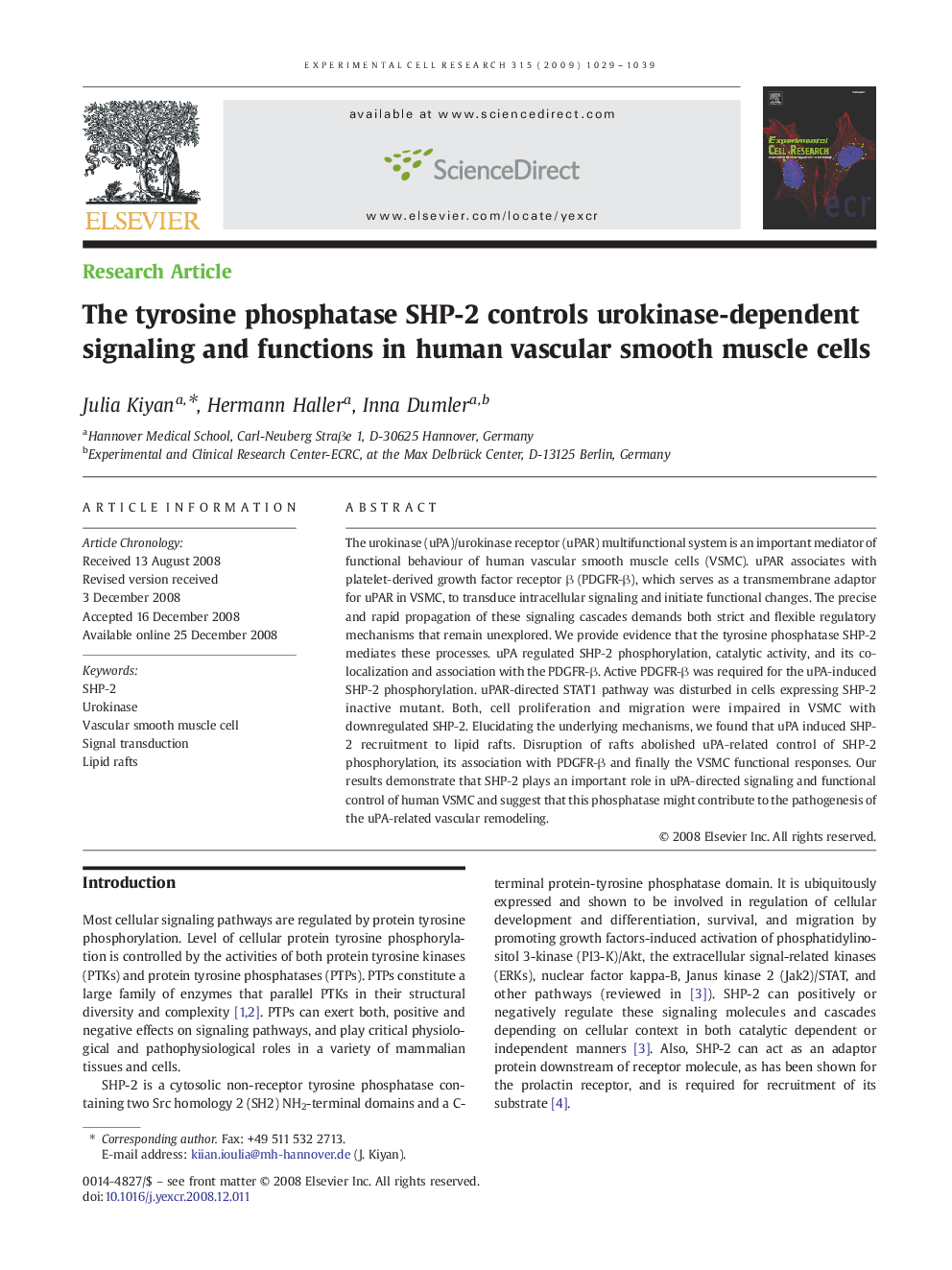| Article ID | Journal | Published Year | Pages | File Type |
|---|---|---|---|---|
| 2131607 | Experimental Cell Research | 2009 | 11 Pages |
The urokinase (uPA)/urokinase receptor (uPAR) multifunctional system is an important mediator of functional behaviour of human vascular smooth muscle cells (VSMC). uPAR associates with platelet-derived growth factor receptor β (PDGFR-β), which serves as a transmembrane adaptor for uPAR in VSMC, to transduce intracellular signaling and initiate functional changes. The precise and rapid propagation of these signaling cascades demands both strict and flexible regulatory mechanisms that remain unexplored. We provide evidence that the tyrosine phosphatase SHP-2 mediates these processes. uPA regulated SHP-2 phosphorylation, catalytic activity, and its co-localization and association with the PDGFR-β. Active PDGFR-β was required for the uPA-induced SHP-2 phosphorylation. uPAR-directed STAT1 pathway was disturbed in cells expressing SHP-2 inactive mutant. Both, cell proliferation and migration were impaired in VSMC with downregulated SHP-2. Elucidating the underlying mechanisms, we found that uPA induced SHP-2 recruitment to lipid rafts. Disruption of rafts abolished uPA-related control of SHP-2 phosphorylation, its association with PDGFR-β and finally the VSMC functional responses. Our results demonstrate that SHP-2 plays an important role in uPA-directed signaling and functional control of human VSMC and suggest that this phosphatase might contribute to the pathogenesis of the uPA-related vascular remodeling.
